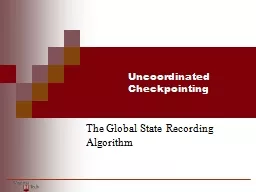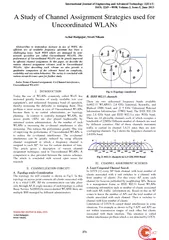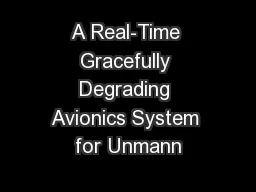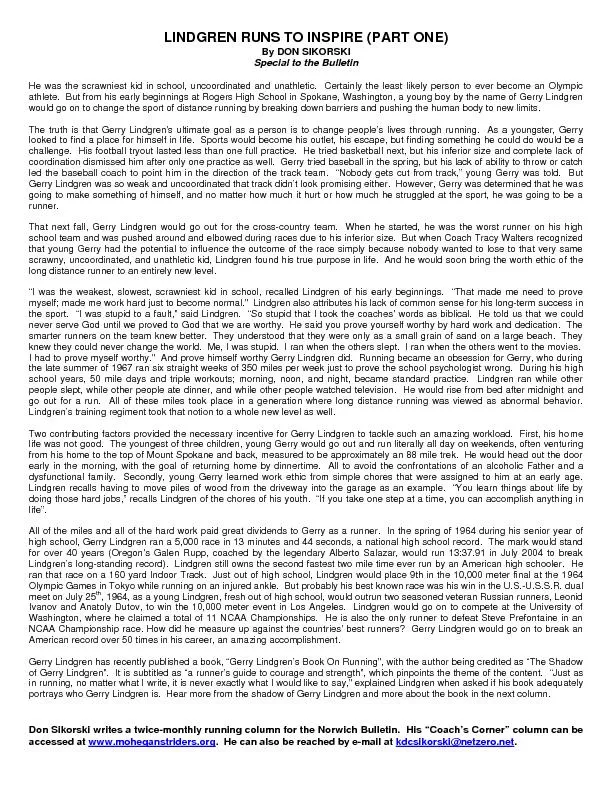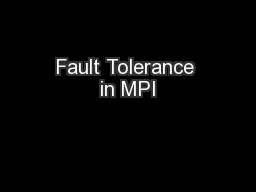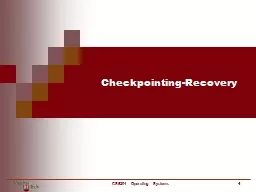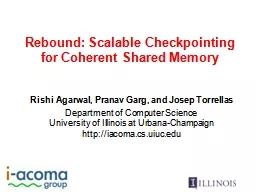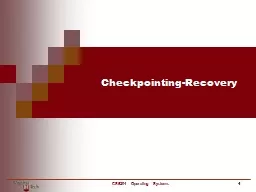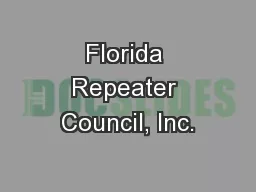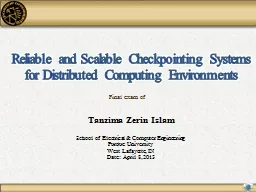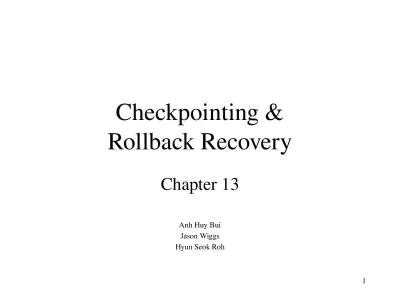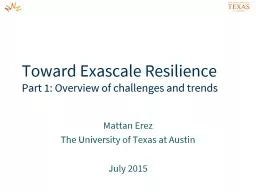PPT-Uncoordinated Checkpointing
Author : olivia-moreira | Published Date : 2016-08-03
The Global State Recording Algorithm CS 5204 Operating Systems 2 The Model Node properties No shared memory No global clock node channel Channel properties
Presentation Embed Code
Download Presentation
Download Presentation The PPT/PDF document "Uncoordinated Checkpointing" is the property of its rightful owner. Permission is granted to download and print the materials on this website for personal, non-commercial use only, and to display it on your personal computer provided you do not modify the materials and that you retain all copyright notices contained in the materials. By downloading content from our website, you accept the terms of this agreement.
Uncoordinated Checkpointing: Transcript
Download Rules Of Document
"Uncoordinated Checkpointing"The content belongs to its owner. You may download and print it for personal use, without modification, and keep all copyright notices. By downloading, you agree to these terms.
Related Documents

